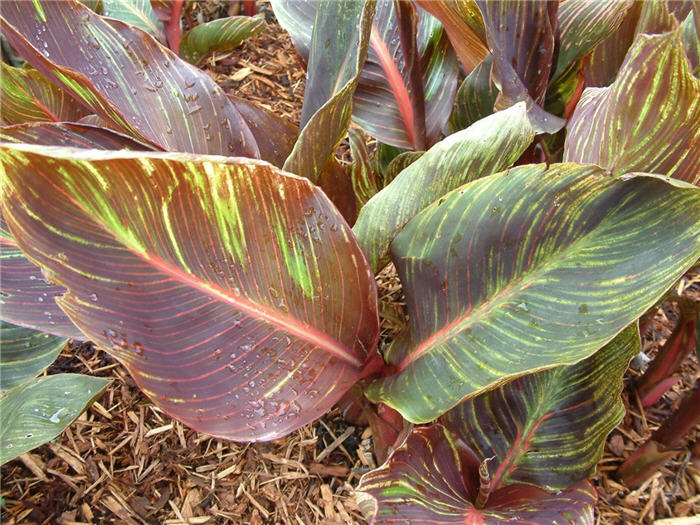| Botanical Name: Canna | |
| Common Name: Canna Lily |

-
Anatomy
-
Culture
-
Design
Plant Type
Perennial, Annual, Bulb
Height Range
1-3', 3-6'
Flower Color
Gold, Orange, Pink, Red, Yellow, White, Multi-Colored
Flower Season
Summer, Fall
Leaf Color
Bronze, Green, Dark Green, Red, Yellow, Variegated
Bark Color
n/a
Fruit Color
n/a
Fruit Season
n/a
Sun
Full
Water
Medium, High, Extra in Summer
Growth Rate
Fast
Soil Type
Sandy, Clay, Loam
Soil Condition
Average, Rich, Well-drained, Moist, Dry
Soil pH
Acid, Neutral
Adverse Factors
n/a
Design Styles
Formal, Mediterranean, Ranch, Spanish, Tropical, Water Garden
Accenting Features
Showy Flowers
Seasonal Interest
Summer, Fall
Location Uses
Entry, Patio
Special Uses
Container
Attracts Wildlife
Hummingbirds
Information by: Stephanie Duer
Photographer:
Photographer:
-
Description
-
Notes
Cannas are a wonderful, bold, tropical-looking plants that emerge from tuberous rootstocks, and range in height from 2 to 10 feet, but are usually pretty narrow compared to their height. The foliage is large, lance-shaped, and may range from green to bronze to purple, and even striped. Flowers bloom mid to late summer, and range in shades of yellow, oranges, reds, and corals. As they are not dependably hardy, enjoy them in containers and raised planters.
A perennial in warmer climates, canna are not dependably winter hardy (they are listed as being hardy to USDA 7). Grow in well drained soil in full sun (though if you want them to over-winter, they need to be in a full sun location with a lot of radiant heat from walls, walks, or drives). Sort of indifferent to soil type, but it must be well draining, especially if they are to over-winter. If you want to leave them over winter, mulch well. For instructions on storing indoors, see Guides. Tolerant of a great deal of water (they can even be planted in pots that are submerged in ponds), they are also remarkably heat and drought tolerant.